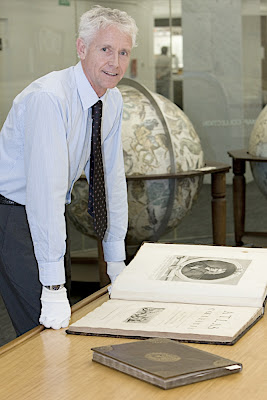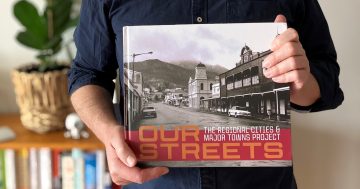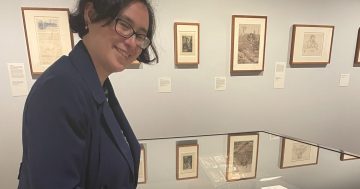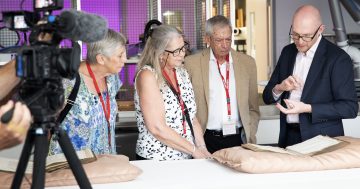 [Curator of Maps at the National Library, Martin Woods with the star atlas, picture courtesy of the NLA]
[Curator of Maps at the National Library, Martin Woods with the star atlas, picture courtesy of the NLA]
The National Library has announced their acquisition of a real treasure:
A seminal atlas by the first British Astronomer Royal, John Flamsteed, of particular significance for Australia and the Pacific, has been acquired by the National Library of Australia.
James Cook is known to have had a copy of the atlas on board the Endeavour for use in the Transit of Venus and Southern Hemisphere explorations.
Flamsteed’s observations were crucial to Newton’s discoveries.





















